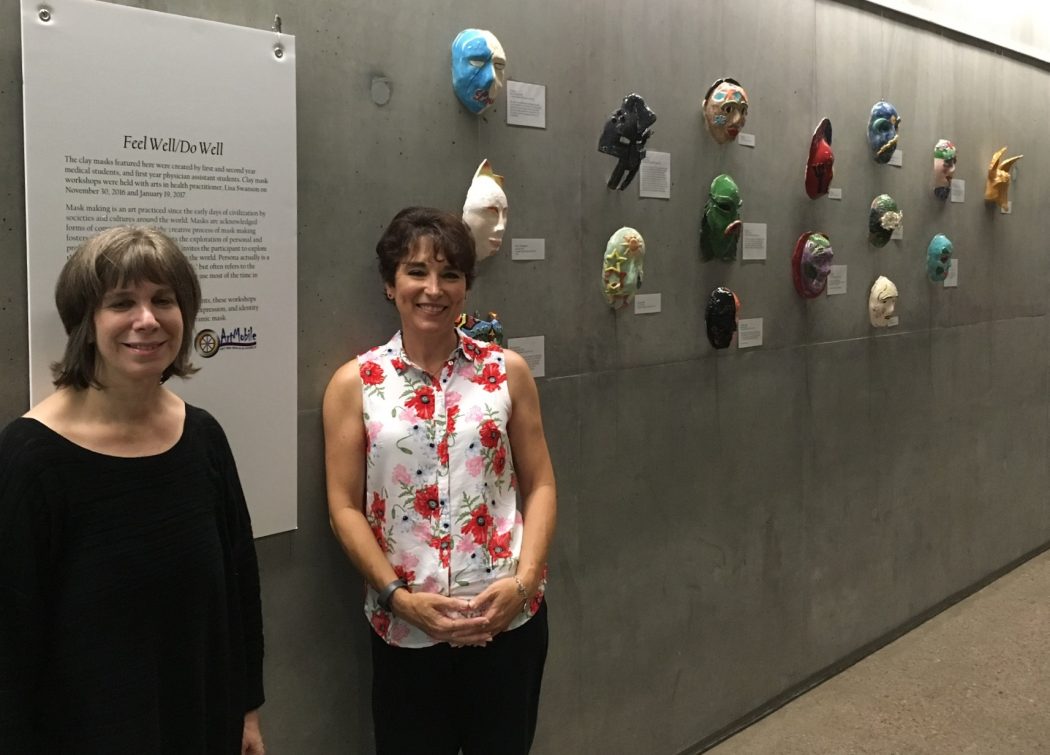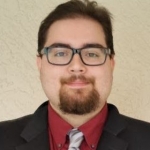Recently, the University of Arizona College of Medicine–Phoenix hosted an Art in Medicine event focusing on ceramics and the creation of masks. This event, led by Dr. Cynthia Standley and Lisa Swanson, the director of ArtMobile, allowed students an opportunity to connect with another side of themselves. Students developed masks that each held a unique meaning, and began to explore the role that the creative arts can have in medicine. In this interview, I ask Lisa Swanson about the Art in Medicine collaboration and what we can learn from behind the mask.
- What is your background in art and medicine?
My education background in art and medicine includes: a BFA visual art–ceramics, an MA in Arts in Medicine from the University of Florida, and this year I was accepted into and completed the Arizona Commission on the Arts Creative Aging Teaching Artist Institute. Presently, I am an Arts in Medicine Practitioner, a Teaching Artist, and Director of ArtMobile, a community arts and health program.
Weekly, I facilitate arts in medicine workshops. I also facilitate patient bedside art at healthcare and community facilities for participants ranging from 5 to 95 years old. This includes participants with various physical and mental disabilities such as autism, brain injury, Down syndrome, stroke, Alzheimer’s, Parkinson’s, and more. I have also collaborated with patients, medical staff, and volunteers in creating two art and medicine environments at medical facilities, including the “Tiles of Compassion” ceramic mural and the “Garden of Oasis” healing garden.
- How does art impact your life?
Art is my existence. I have been an artist and art teacher almost my entire lifespan. The greatest impact art has had on my life was discovering that I as an artist possess skills that can make a difference in the health of individuals suffering from illness. Art fuels my passion toward my calling as an artist within the medical field and brings completeness to my life.
- How did the recent Art in Medicine event, featuring mask-making, come about?
Dr. Cynthia Standley invited me to meet with her at the College of Medicine after my inquiry to learn more about the Art in Medicine program. The Art in Medicine event, featuring mask-making, came about during this meeting when she discovered that I was a ceramic artist. She had recently been to a similar ceramic mask art show at Wayne State School of Medicine and showed me pictures of their art show. The idea to have an expressive mask art show for the art in medicine program at the University of Arizona College of Medicine–Phoenix came to Dr. Standley during the meeting. She asked if I would like to help with the show, which I was excited to do.
- What is the meaning of masks? How does the symbolism of the mask apply to medicine, in your opinion?
Mask-making is an art practiced since the early days of civilization by societies and cultures around the world. Masks are acknowledged forms of communication and the creative process of mask-making fosters self-expression and supports the exploration of personal and professional identity. Making a mask invites you to explore the persona you reveal or conceal from the world. Persona is actually a word that derives from the Latin for “mask”.
The symbolism of the mask which invites one to explore their revealed or concealed persona is used frequently in art therapy with various populations. An example would be veterans; mask-making can ease PTSD for the veteran and help doctors to understand the military experience from the veteran’s viewpoint.
- How, in creating these masks, can we learn more about medicine?
Often patients are unable to verbalize their feelings, and if they can it is challenging to communicate what they are going through. Mask-making provides an outlet for non-verbal personal expression allowing the mask creator to communicate their hidden persona and can help doctors comprehend what the patient is experiencing. The process of making these artistic expressions may also be a form of therapy. Mask-making can also provide educators the opportunity to explore the experience of medical students in forming their professional identity.
- What are some common motifs and symbols used in mask-making, and how can we use them to communicate about ourselves?
Common motifs and symbols found in masks were not explored during the mask-making workshops. Creative personal expression meaningful to each participant was encouraged along with freedom to create their own designs, both representational and abstract, in order to communicate their persona.
- What is your hope for the future of the Art in Medicine program?
My hope for the Art in Medicine Program is that Dr. Standley’s substantial effort, research, and design of the program will continue its momentum. I hope that it will expand and be accredited as required course for medical education at University of Arizona College of Medicine–Phoenix.
- If you could communicate one thing to medical students about the value of art, especially of masks, when it comes to being a good physician, what would you want to say?
It is essential for your patients, staff, and yourselves to recognize the benefits of creating meaningful artistic experiences such as mask making. These experiences provide a non-verbal outlet for personal expression to communicate one’s persona, which can help to understand a patient’s experience and perspective.
Mohammad Khan is a fourth-year medical student in The University of Arizona College of Medicine – Phoenix, Class of 2021. He graduated from Arizona State University in 2014 with two bachelor's degrees in biochemistry and biology. He then worked as a teacher and completed a Master's in biomedical diagnostics in 2017. For fun, Mohammad (who also goes by Mokha) likes to practice at the archery range, work on calligraphy, game, and fountain pen writing, and read science fiction novels. He is interested in medicine with a focus on educating patients.


